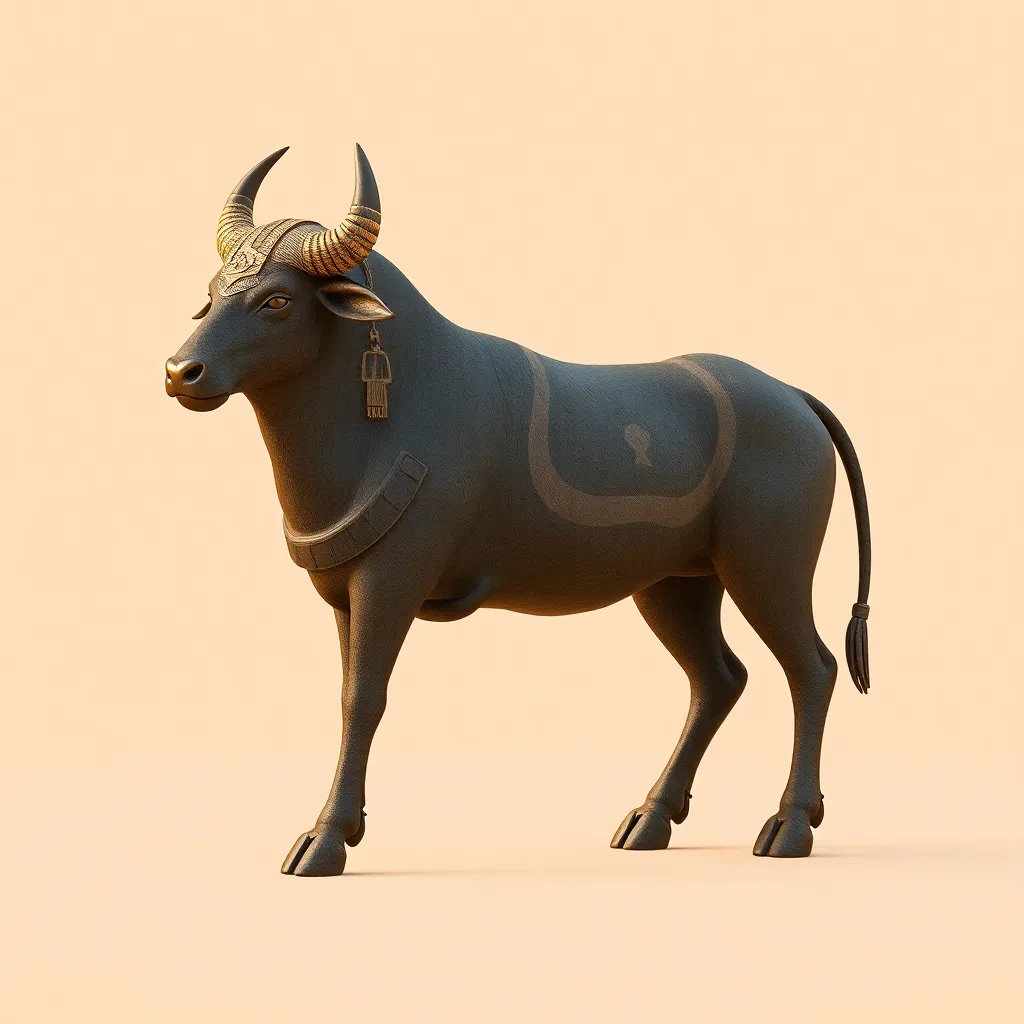The Apis Bull: A Symbol of the Eternal Cycle of Life
1. Introduction to the Apis Bull
The Apis Bull, known as the sacred bull of the ancient Egyptians, holds a significant place in the mythology and religion of ancient Egypt. Revered as a manifestation of the god Ptah and associated with fertility and strength, the Apis Bull symbolized the cycles of life, death, and rebirth. Its image was deeply embedded in the cultural and spiritual lives of the ancient Egyptians, representing not just physical power, but also a divine connection to the gods.
2. Historical Background of the Apis Bull
The origins of the Apis Bull can be traced back to the Old Kingdom of Egypt, around 3000 BCE. Archaeological discoveries near Memphis, the ancient capital, have revealed numerous depictions and remains of the Apis Bulls. These findings underscore the importance of the bull in the socio-religious fabric of ancient Egyptian civilization.
Key archaeological findings include:
- The Serapeum of Saqqara, a burial site for the Apis Bulls, which contains elaborate tombs.
- Inscribed monuments detailing the lineage of specific bulls, highlighting their revered status.
- Artifacts depicting the Apis Bull in various forms of art, illustrating its significance in religious practices.
3. The Apis Bull in Egyptian Mythology
In Egyptian mythology, the Apis Bull was often linked to creation myths, particularly through its association with the god Osiris. The bull was seen as a symbol of fertility and regeneration, playing a crucial role in the mythology surrounding life after death. It was believed that the Apis Bull embodied the soul of Osiris, thus establishing a vital connection between the divine and the earthly realms.
The Apis Bull also held a strong connection to Ptah, the creator god of Memphis, further emphasizing its role as a symbol of creation and life. The bull was often depicted as a powerful creature, embodying the strength and fertility necessary for creation.
4. Symbolism of the Apis Bull
The Apis Bull is a profound symbol representing various themes in ancient Egyptian culture:
- Fertility: The bull was seen as a source of life, associated with agricultural prosperity and the fertility of the land.
- Strength: As a powerful animal, the Apis Bull represented physical strength and dominance.
- Rebirth: The cyclical nature of life and death, with the bull’s death leading to its mummification and eventual rebirth in the afterlife, was a central theme.
Overall, the Apis Bull epitomized the eternal cycle of life and death, resonating deeply with the Egyptian belief in the afterlife and the continuity of existence.
5. Rituals and Worship of the Apis Bull
Worship of the Apis Bull involved elaborate rituals and ceremonies, reflecting its sacred status. The most notable practices included:
- Festivals: Annual festivals were held in honor of the Apis Bull, celebrating its significance and strength.
- Offerings: Devotees offered food, incense, and other gifts to the bull, seeking blessings for fertility and prosperity.
- Funerary rites: The Apis Bull played a crucial role in funerary practices, with its death symbolizing the transition to the afterlife.
The rituals surrounding the Apis Bull not only reinforced its divine status but also served to unite the community in shared beliefs and practices.
6. The Life Cycle of the Apis Bull
The life of the Apis Bull was marked by significant phases, emphasizing its sacredness. The birth of the bull was celebrated, as it was believed to be a divine event. Once the bull reached maturity, it was revered and cared for in temples, where it lived in luxury.
Upon the death of an Apis Bull, a meticulous mummification process was undertaken, signifying its importance in the afterlife. This process included:
- Embalming the body to preserve it for eternity.
- Burial in the Serapeum, a grand underground necropolis.
- Rituals to ensure the bull’s safe passage to the afterlife.
The life cycle of the Apis Bull thus mirrored the beliefs of the Egyptians regarding death and resurrection, reinforcing the idea of eternal life.
7. The Legacy of the Apis Bull in Modern Culture
The legacy of the Apis Bull continues to influence modern culture, appearing in contemporary art, literature, and spirituality. Artists draw inspiration from the bull’s powerful imagery, often exploring themes of strength, fertility, and the cycle of life.
Additionally, the Apis Bull can be compared to similar symbols in other cultures, such as:
- The Taurus constellation in astrology, representing stability and fertility.
- The sacred cows in Hinduism, symbolizing life and motherhood.
- The Minotaur in Greek mythology, which represents strength and power.
These comparisons highlight the universal themes of life, death, and rebirth that resonate across various cultures.
8. Conclusion: The Enduring Significance of the Apis Bull
In conclusion, the Apis Bull stands as a timeless symbol of the eternal cycles of life and death. Its significance in ancient Egyptian culture reflects deep spiritual beliefs that continue to echo in modern society. Today, the Apis Bull remains a powerful reminder of the interconnectedness of life, the importance of fertility, and the enduring nature of the human spirit.
As we explore the legacy of the Apis Bull, we can find relevance in its symbolism, encouraging us to reflect on our own cycles of life and the spiritual connections we share with the world around us.




